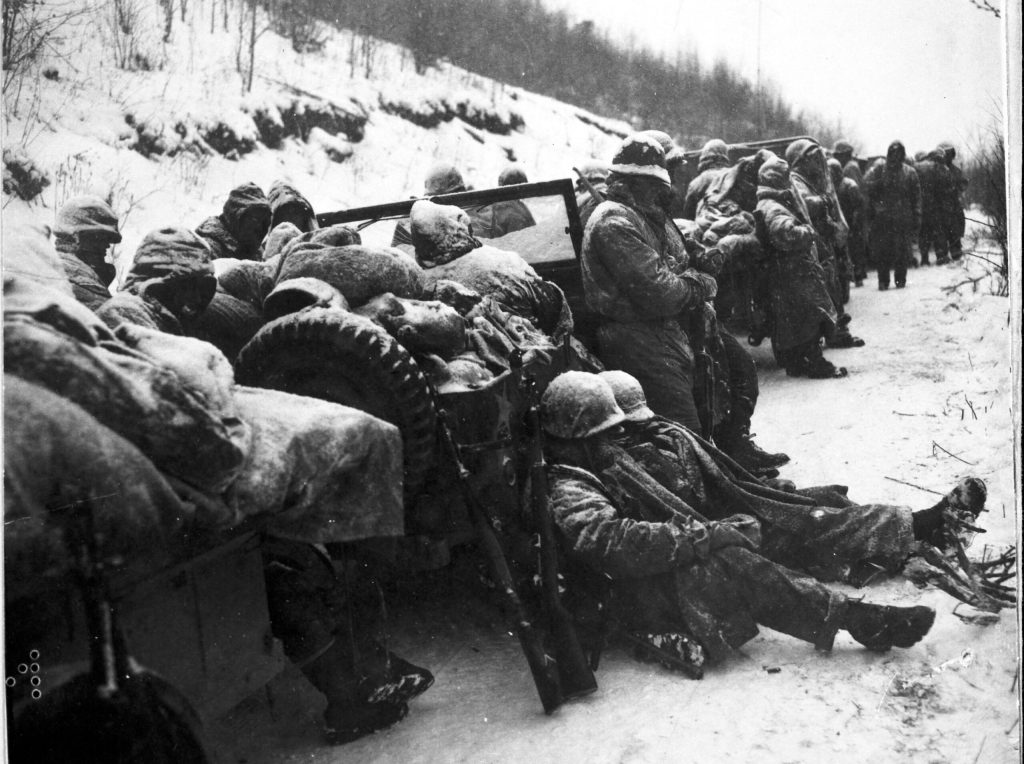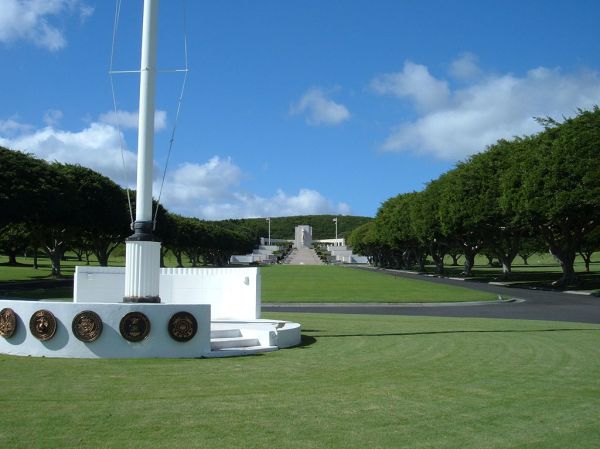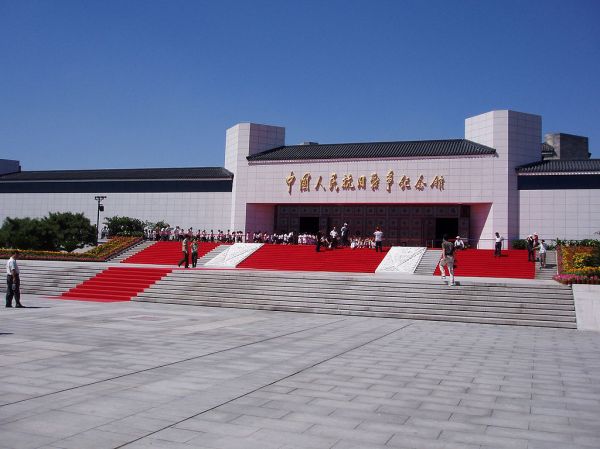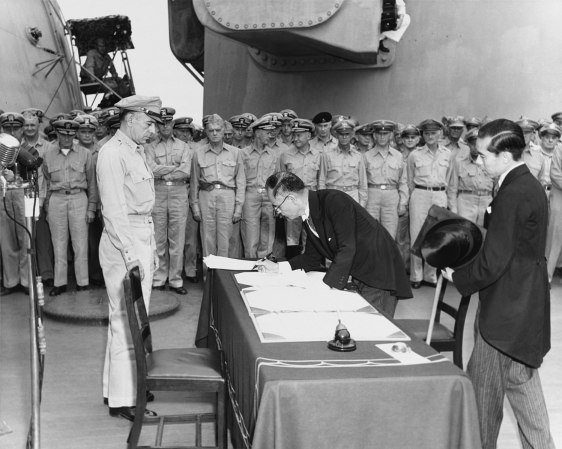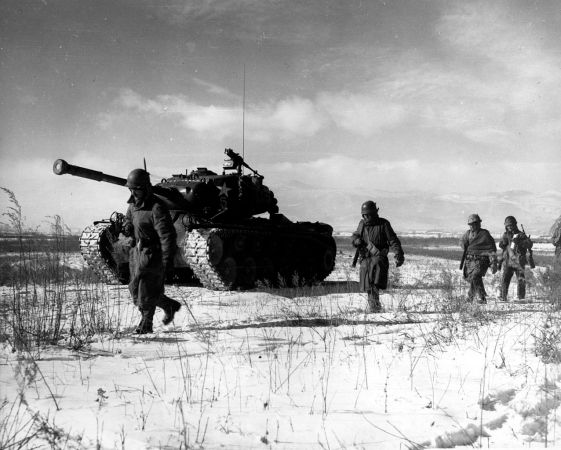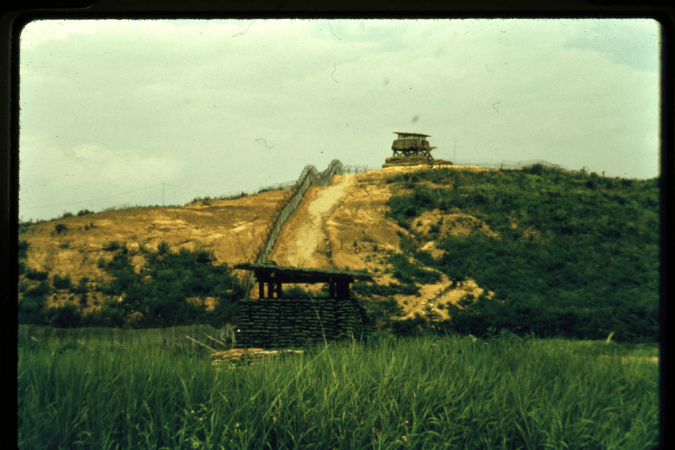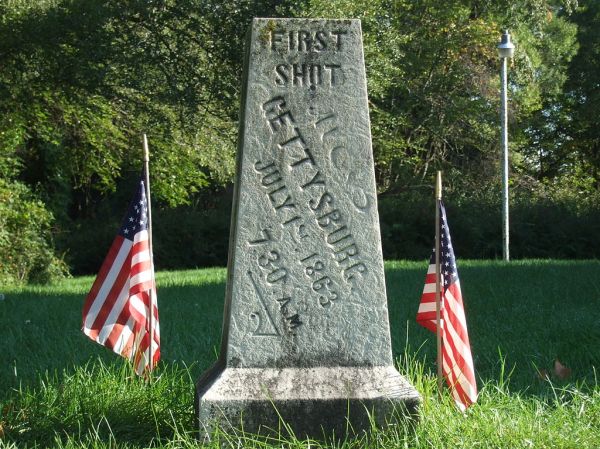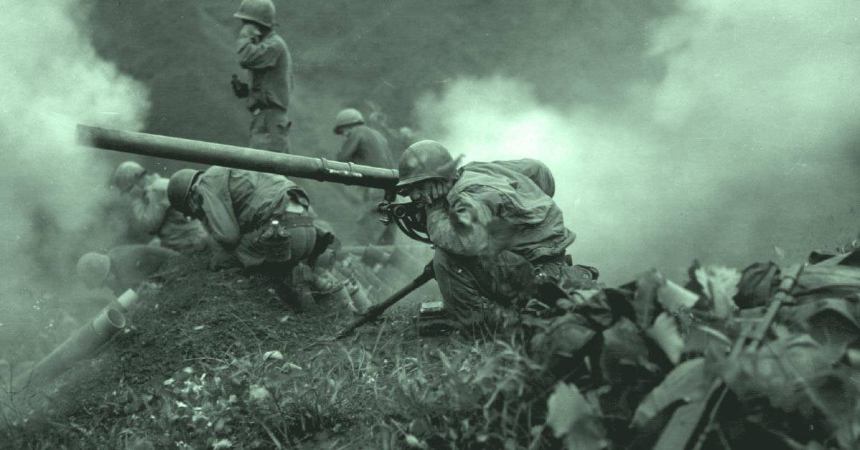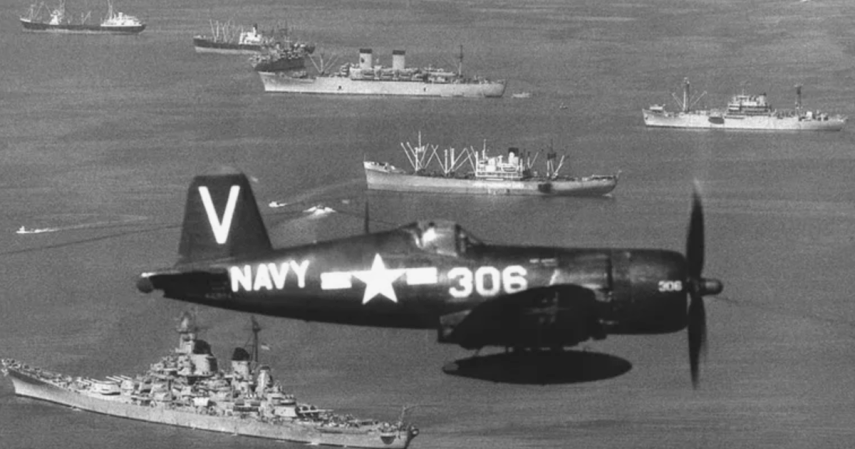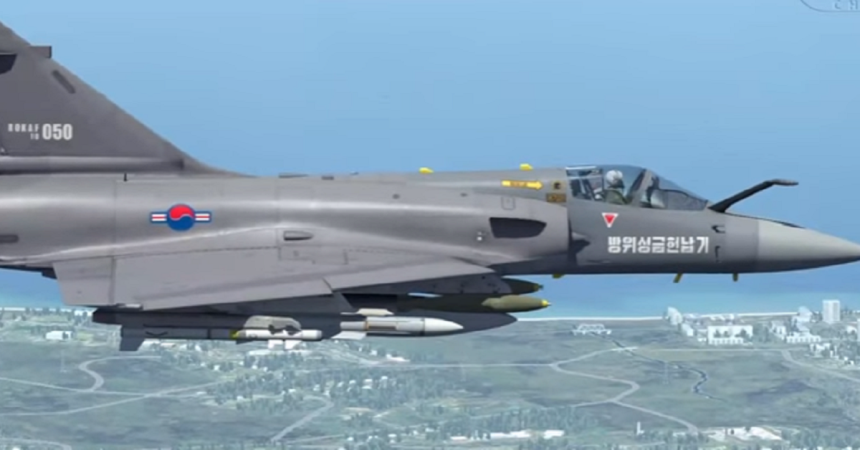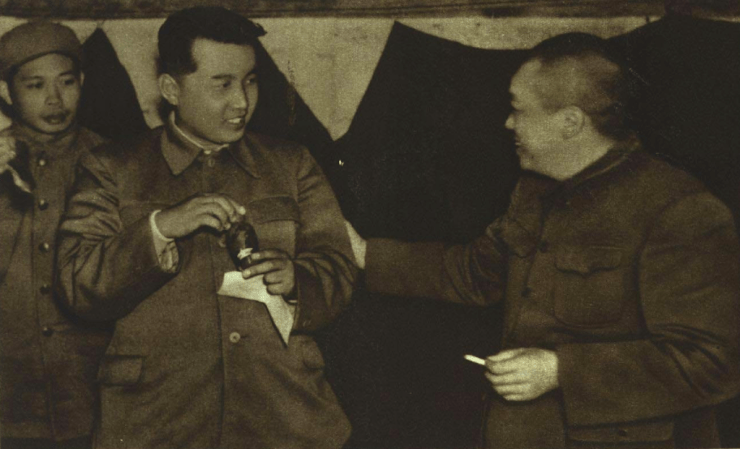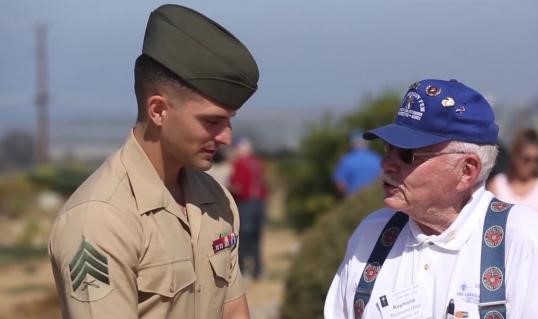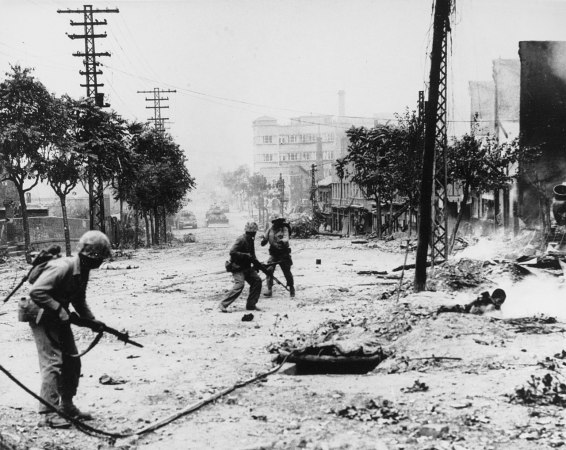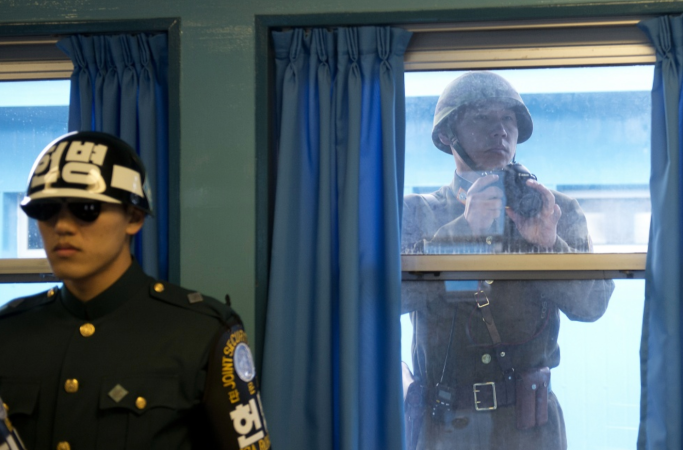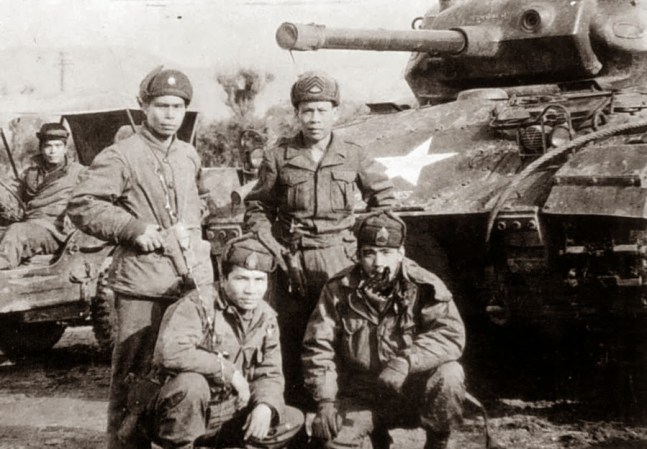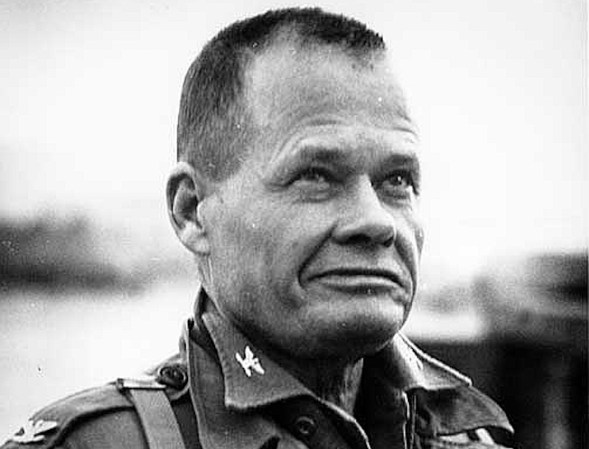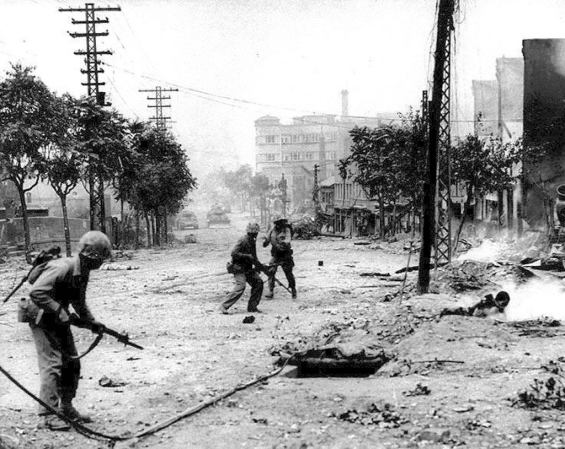Sometimes called the Battle of Chosin Reservoir, this major battle of the Korean War took place from November 26, 1950, until December 13, 1950. Chosin took place on some of the toughest terrain during harsh winter conditions. In addition to the enemy, service members faced frozen ground, frostbite conditions, icy roads, and weapon malfunctions.
Combat took place around the frozen Chosin reservoir and in the rugged mountains of Korea. This was the first major engagement between the US X Corps and the People’s Volunteer Army (PVA) 9th Army, organized by China’s Chairman Mao Zedong. After the battle was over, all United Nations forces withdrew from North Korea. In all, the DoD issued 13 Medals of Honor to soldiers, pilots, and Marines who participated in combat.
Here is your guide to the Battle of Chosin Reservoir
X Corps Push to Chosin
Chosin is located in the northeast of the Korean peninsula. The battle’s main focus around this man-made lake centered along the 78-mile-long road that connects the Chosin Reservoir with Hungnam. The reason? The road was the only way for UN Forces to retreat.
After the Inchon Landing, the US X Corps continued to push further into Korea. However, the PVA expected there would be a light UN presence at the reservoir. So, the VPA’s 9th Army destroyed UN garrisons in several locations, expecting the X Corps to reroute and rescue those left behind. What the Chinese didn’t count on is that the size of the UN forces was much larger than expected. UN forces at Chosin were supported by significant air power because of the 1st Marine Aircraft Wing stationed at nearby Yono Airfield. Additionally, five aircraft carriers from the Navy’s Task Force 77 could launch as many as 230 sorties a day to provide close-air support.
MacArthur and Almond
Gen. MacArthur was so sure that service members would be out of Korea within weeks that he told President Truman it would all be over by Thanksgiving. Then, he told his troops they’d be home for Christmas. While confidence reigned at MacArthur’s Tokyo headquarters, the situation in Korea was becoming more concerning.
Temperatures plunged because of a Siberian cold front. Cold led to frostbite. In turn, medical supplies froze, weapons malfunctioned, and batteries died. Maj. Gen. Edward Almond, the commander of X Corps, and MacArthur started to disagree about the size of the PKA assembling in North Korea. As they bickered about the next best step, 120,000 Chinese VPA soldiers slowly assembled around America’s Army and Marine forces.
The Chinese Attack
Marines woke up after midnight on November 27, 1950, to loudspeakers blaring commands, cymbals clanging, and bugles blaring. Chinese troops shouted, “Marines, tonight you die,” as Marines struggled from their sleeping quarters. Star shells illuminated the night as front-line Marines tried to slow the Chinese assault with M-1 rifles, machine guns, and grenades. Meanwhile, Charlie and Fox companies of the 7th Marines defended their lines at Toktong Pass. Several Marines earned the Medal of Honor for their heroic efforts during this phase of the Battle of Chosin.
While the Marines were under attack, the Regimental Combat Team 31 reached their positions east of the reservoir. Here, Chinese soldiers attacked the heavily outnumbered RCT because the lead battalions were not within support range of one another. Maj. Gen. Almond urged the RCT to continue the advance, but Col. Allan MacLean realized that retreat was the only possible option.

Task Force Faith
As they retreated, soldiers suffered heavy casualties. MacLean was then captured by the VPA. Command went to Lt. Col. Don Faith, and the task force was then renamed Task Force Faith. Icy roads stopped several attempts to receive RCT 1. Then, Col. Faith learned that no new attempts were coming. Ammunition was running low. Faith organized one more attempt to break out toward Marines embedded at Hagaru-ri. More than 500 wounded were loaded in stacks on trucks, and Faith led his men as machine gun fire poured down in all directions.
At a turn in the road, a Chinese roadblock halted their progress. The only way to continue the retreat was to attack the Chinese at Hill 1221. So, Faith gathered his men and ammunition and quickly devised a plan. He attacked the hill, and the small force managed to secure it, but not before Faith was mortally wounded by a Chinese grenade. Ten members of Task Forth Faith earned the Distinguished Silver Cross. For his efforts, Faith earned the Medal of Honor.
During the fight, more than one thousand American service members were captured or killed. However, without Faith’s push to Hill 1221, the Chinese would have advanced and captured Hagaru-ri, putting more than 15,000 Marines in mortal danger.
“Advancing in a Different Direction”
Within a day, MacArthur understood that withdrawal was necessary and ordered that X Corps evacuate via the port at Hungnam. During a media brief, Maj. Gen. Smith spread the message that the X Corps wasn’t withdrawing from the Chosin battle; rather, they were “advancing in a different direction.”
No matter the language, the choice was clear. Marines needed to evacuate quickly or risk being killed by the rapidly advancing Chinese. The only way to make that happen involved opening the road to Hagaru-ri. During a blizzard, the 1st Battalion, 7th Marines, led by Captain Ray Davis, moved toward Fox Company position. Then, the 3rd Battalion, 7th Marines retook Hills 1542 and 1419. This allowed the remaining Marines to continue their push south. On December 2, the Toktong pass was secured.
But the Battle of Chosin wasn’t over yet.
The Path to Hungnam
Soldiers leaned on resourcefulness and determination to fend off the additional VPA attacks in Hell Fire Valley. Then, they worked to bridge the road all the way through Funchilin Pass. By December 1, the PVA’s 58th Division was nearly incapacitated. Reinforcements didn’t arrive in time before the Marines broke out of Yudam-ni. Airfield traffic began again on December 1, allowing for reinforcements to arrive and for the dead and wounded to be evacuated. The breakout to Hungnam started on December 6. At the same time, the PVA reinforcements finally arrived. Marines recaptured East Hill from the 76th Division. Another night attack was launched, but the Marines prevailed.
After the road opened at Hagaru-ri, the 77th Division returned to the peaks and started attacking the withdrawing Marines. Fighting broke out, and the retreat slowed. Marine night fighters quashed the Chinese advance, and eventually, the rest of the column reached their destination. Desperate for a victory, Chinese commander Song Shilun ordered troops to dig in at Funchilin Pass. Meanwhile, they blew up a vital bridge. In response, the 1st Battalion, 1st Marines attacked Hill 1081 from the south and it was captured on December 9.
However, without that bridge, the path to Hungnam was blocked. So, eight C-119 Flying Boxcars dropped portable bridge sections by parachute, one section at a time. Four sections were successfully reassembled with additional wooden extensions. This allowed the UN forces to proceed toward Hungnam.

Evacuation
American military historians often refer to the Battle at Chosin evaluation as the “greatest evacuation movement by sea in US military history.” That’s because a 193-vessel armada evacuated not just X Corps troops but also their equipment and nearly a third of the Korean refugees wishing to leave the country. The last UN unit left on December 24, 1950, and the port was destroyed, so the Chinese couldn’t use it. PVA troops entered Hungnam on December 25.
Casualties at the Battle of Chosin were great. In total, 4,385 Marines and 3,163 Soldiers lost their lives. Despite the losses, much of the X Corps remained. Nearly 105,000 service members and 17,500 vehicles were shipped from Hungnam to Pusan.
The Battle of Chosin ended the wider expectation that the UN forces would win a total victory in Korea. By the end of 1950, PVA forces had captured North Korea and pushed forces back to the 38th Parallel. However, the Battle of Chosin is considered by many to be the most brutal of modern warfare because of the weather conditions, casualty rate, and level of violence experienced on both sides. During the fourteen days the battle raged, 17 Medals of Honor and 78 Service Cross medals were earned. That’s the second most after the Battle of the Bulge.
Here’s why the Battle of Chosin is one of the most significant in Marine Corps history.
How the Battle of Chosin is remembered today

American veterans who survived the battle are often called the Chosin Few. The Star of Koto-ri reflects their service and sacrifice during the conflict. Here’s what one survivor had to say about the battle.
National Korean War Veterans Armistice Day is observed each day on July 27. On this day, the country pauses to remember the nearly 50,000 American service members who died during the Korean War. Each year on this day, the president of the United States issues a proclamation in honor of the Korean War veterans and their families. Observances on military installations are common, as are vigils at military cemeteries. Events are held at the Korean War Veterans Memorial as well.
FAQs
How long was the Korean War?
The war lasted three years.
Why did the Korean War start?
After WWII, Korea was divided along the 38th Parallel. The North established a communist government, and the south became democratic.
What caused the US to get involved?
The United States got involved because China’s Chairman Mao Zedong announced China’s support of North Korea’s communist efforts.


